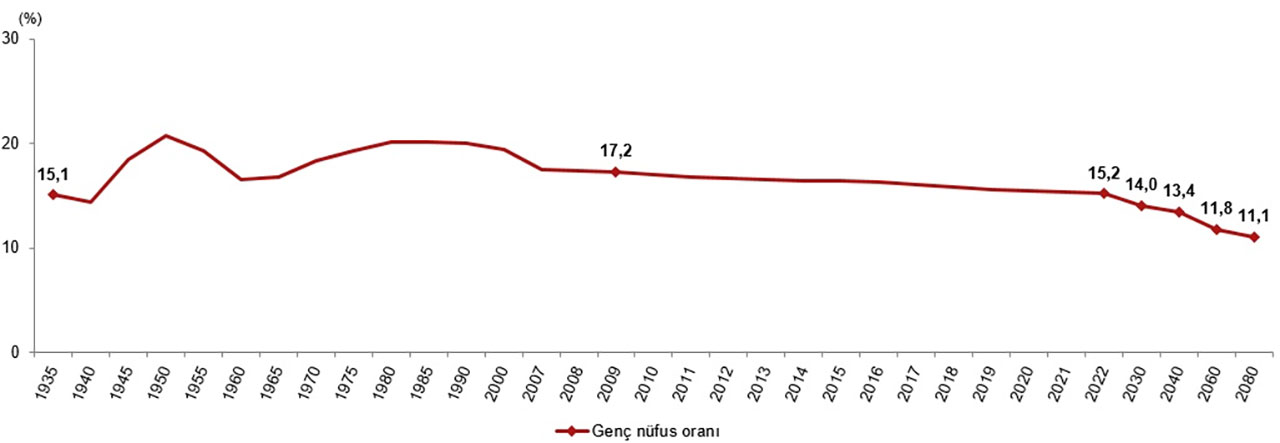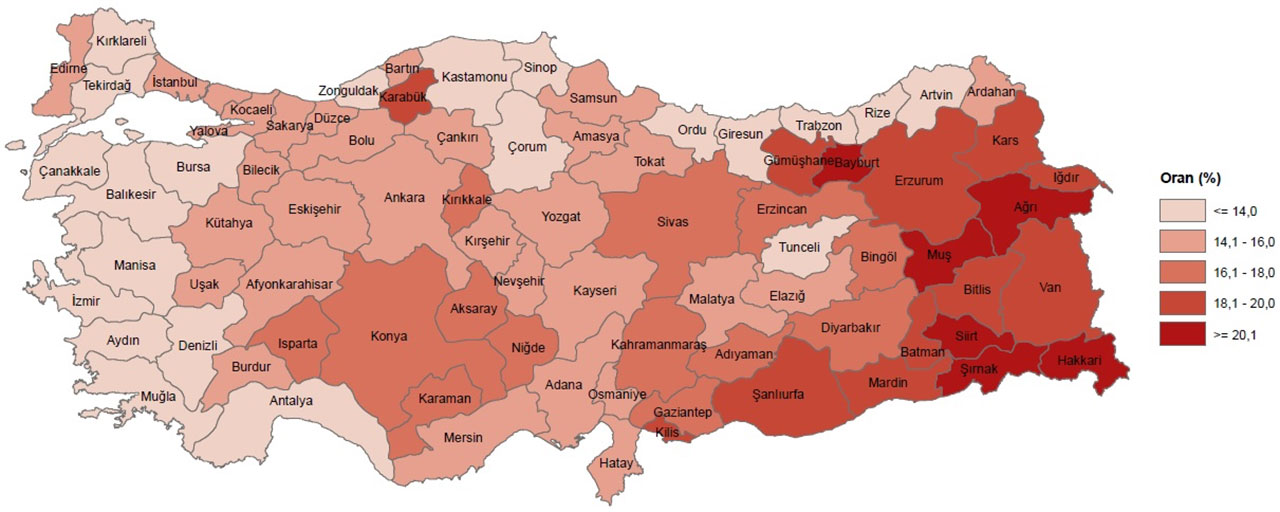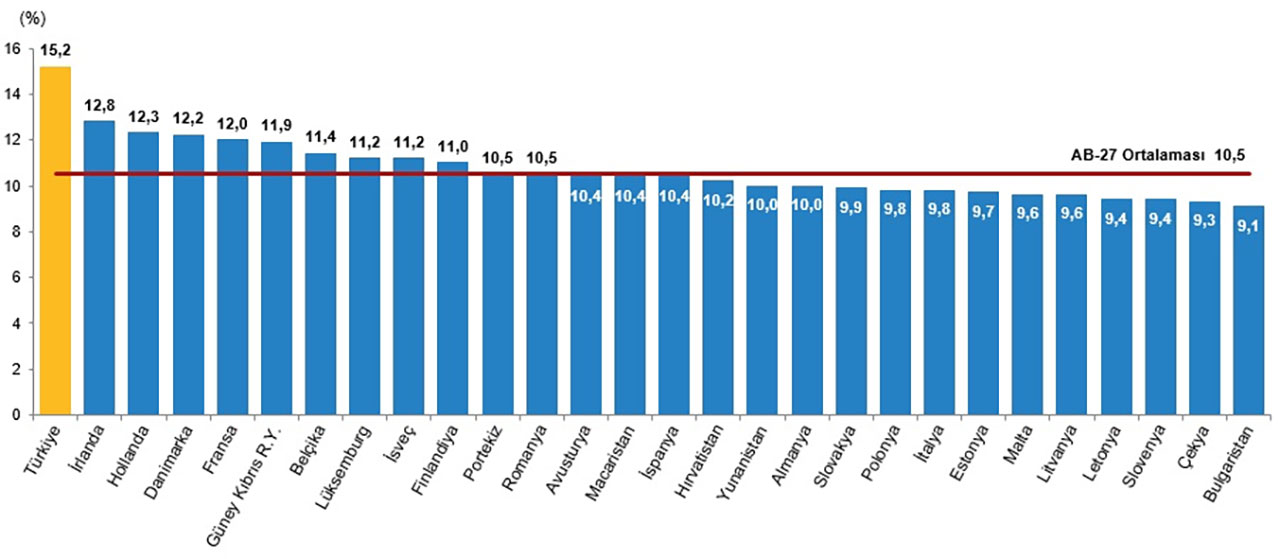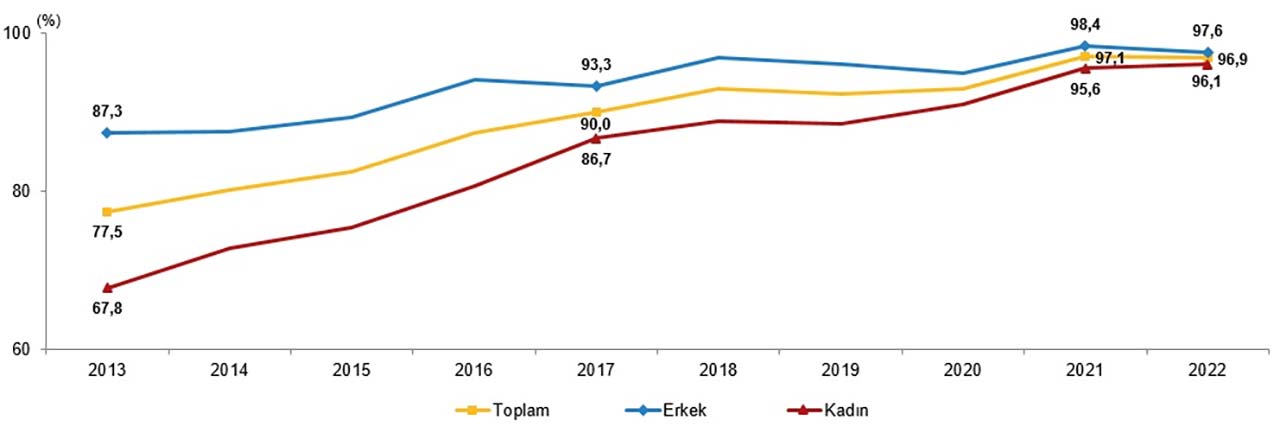TURKSTAT published its comprehensive report that sheds light on the young population in Turkey. The report touches on many topics, from marriage rates to education level, from causes of death to happiness.
The Turkish Statistical Institute (TUIK), published every year,Youth with Statistics” published its report covering the data of 2022. The report revealed many details about the youth population ratio and young population in Turkey.
According to the report prepared with the Address-Based Population Registration System (ADNKS) data, as of the end of 2022, Young population between the ages of 15-24 12 million 949 thousand 817 people it happened. The shared data on the young population is as follows:
Ratio of youth to total population and gender distribution in Turkey:
12 million 949 thousand 817 young people, the total population of 85 million 279 thousand 553 by the end of 2022 15.2% of forming. 51.2% of the young population is male and 48.8% is female.
29.7% of the young population is 15-17 years old, 19.1% is 18-19 years old, 30.2% of them are 20-22 years old and 21% are in the 23-24 age group.
The change in the ratio of the young population to the total population by years:

The young population in Turkey has been following the downward trend since the period 1975-1980. In addition, the data show that the young population in Turkey is in the future. It will continue to decline for 57 years. predicts.
According to the table shared by TURKSTAT, the proportion of the young population in the general population is expected to decrease to 14% in 2030 and to 11.1% in 2080.
Provinces with the highest and lowest youth population and youth population map:
Provinces with the highest youth population:
- Hakkari – 22%
- Sirnak – 21.7%
- Siirt – 21.1%
- Bayburt – 20.6%
- Pain – 20.4%
- Mus – 20.2%
- Van – 19.8%
- Batman – 19.4%
- Bitlis – 19.3%
- Gumushane – 18.7%
Provinces with the lowest youth population:
- Mugla – 12.3%
- Balikesir – 12.3%
- Army – 12.7%
- Tunceli – 12.8%
- Sinop – 12.8%
- Kirklareli – 12.8%
- Izmir – 12.9%
- Aydin – 13%
- Corum – 13.1%
- Giresun – 13.3%
Map showing the distribution of the young population by cities:

Young population in Europe and Turkey:

Turkey has a higher distribution of young population than all European countries. Turkey is the first among European countries, followed by Ireland with 12.8% and the Netherlands with 12.3%. The average young population distribution in the European Union member countries is 10.5%.
Life expectancy in the young population:
The remaining life expectancy in 15-year-old youth, who is the head of the youth population, is as follows:
- Average: 63.6 years (Total 78.6 years)
- Male: 61 years (76 years in total)
- Female: 66.4 years (81.4 years)
While this value is 77.7 years on average in Turkey, it is 75 for men; 80.5 years for women.
Marriage rate for young women and men:
- Marriage rate among young male population: 3.6%
- Marriage rate among young female population: 13.7%
While the divorce rate for men was 0.1%, this rate was 0.4% for women.
Proportion of young people who are neither in education nor in employment:

- Unemployment rate: 19.4% (was 22.6% in 2021)
- Male unemployment rate: 16.4% (was 19.4% in 2021)
- Female unemployment rate: 25.2% (was 28.7% in 2021)
- Proportion of young people who are neither in employment nor in education: 24.2% (was 28.7% in 2021)
Education level of young people aged 15-24:
- Primary School – 93.2%
- Secondary School – 89.8%
- Secondary Education – 89.7%
- Higher Education – 44.7%
The greatest difference between men and women was seen in higher education. While 40.3% of young men were at higher education level, this value was 49.2% for women.
The rate of satisfaction with the health status of young people:
- Average satisfaction: 84.8% (was 83.5% in 2021)
- Male satisfaction: 89.9% (was 85.9% in 2021)
- Female satisfaction: 79.5% (was 81% in 2021)
The general happiness level of the young population by gender:

- Happy: 47.9% (was 44.5% in 2021)
- Moderate: 36.4% (was 35.1% in 2021)
- Unhappy: 15.7% (was 20.4% in 2021)
While the happiness rate for men was 44.1%, it was 51.9% for women.
Young people’s source of happiness:
43.8% of young people cited health as the greatest source of happiness. This was followed by love with 15.5%, success with 23.4%, money with 12.3% and ‘other’ with 5.1%. The distribution by gender is as follows:
Source of happiness in men:
- Health – 39.4%
- Success – 27.9%
- Money – 17%
- Love – 9.7%
- Other – 5.9%
Source of happiness in women:
- Health – 48.3%
- Love – 21.6%
- Success – 18.6%
- Money – 7.2%
- Other – 4.3%
Proportion of young people who died by cause of death and gender:
The majority of deaths in the 15-24 age group in 2021 were due to external causes of injury and poisoning. The distribution of causes of death was as follows:
- External causes of injury and poisoning: 38.2%
- In men: 42.3%
- Women: 28.3%
- Benign and malignant tumors: 8.2%
- In men: 6.9%
- In women: 11.4%
- Nervous system and sensory organs diseases: 7.7%
- In men: 6.8%
- In women: 9.8%
- Circulatory system diseases: 6.2%
- In men: 5.5%
- In women: 7.8%
- Respiratory system diseases: 4.7%
- In men: 4.4%
- In women: 5.5%
- Diseases related to endocrine, nutrition and metabolism: 1.4%
- In men: 1.1%
- Women: 2.2%
- Other: 12.4%
- In men: 9.9%
- In women: 18.4%
- Unknown: 12.4%
- In men: 23%
- Women: 16.5%
Proportion of young people using the Internet:
In Turkey that 96.9% of young people are internet users shared. This rate was 97.1% in 2021. While it was 97.6% for men, it was 96.1% for women. Here’s the change over the years:

RELATED NEWS
Research Showing We Are About to Lose Our Future: 73% of Young People Don’t Want to Live in Turkey
Source :
https://data.tuik.gov.tr/Bulten/Index?p=Istatistiklere-Genclik-2022-49670
